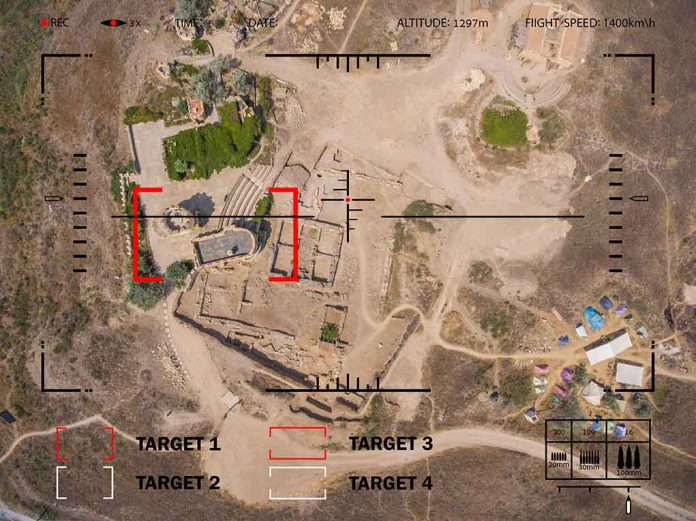
The US Marine Corps has formed a new competitive attack drone team, drawing crucial lessons from Ukraine’s warfare tactics to prepare for future battlefield challenges.
Key Takeaways
- The Marine Corps Attack Drone Team (MCADT) is being established to adapt military strategy based on lessons from modern conflicts, particularly the Ukraine war.
- The initiative emphasizes cost-effective drone systems, with small drone systems capable of precision strikes up to 20 kilometers for under $5,000.
- Led by Major Alejandro Tavizon, the team will be based with the Warfighting Laboratory and Weapons Training Battalion.
- MCADT will represent the Corps in global drone competitions and execute tactical missions using first-person view drones in realistic combat scenarios.
- The development reflects a broader trend of military forces worldwide adapting to drone warfare innovations seen in Ukraine.
Marines Adapt to Modern Warfare with New Drone Team
The United States Marine Corps has launched the Marine Corps Attack Drone Team (MCADT), a specialized unit focused on integrating advanced drone tactics into military operations. This strategic initiative directly responds to the transformative impact of drone warfare observed in the Ukraine conflict. The team will operate under the Weapons Training Battalion with a mission to develop expertise in deploying small, affordable drone systems for precision strikes and reconnaissance. This development marks a significant shift in military doctrine as conventional forces adapt to technologies that have proven decisive in contemporary battlefields.
Major Alejandro Tavizon, who will oversee the team, emphasized the importance of keeping pace with rapidly evolving battlefield technologies. The MCADT will focus on building drone warfare proficiency through specialized training courses and hands-on experience with various unmanned aerial systems. The team represents the Marine Corps’ commitment to maintaining technological superiority in an era where small, inexpensive drones have demonstrated outsized impact in conflict zones around the world.
🇺🇸WAR GAMES, LITERALLY – MARINES FORM ELITE ATTACK DRONE SQUAD
The Marine Corps is getting into the drone game — not with billion-dollar aircraft, but with $5K first-person-view drones that pack a serious punch.
The new Attack Drone Team, based in Quantico, will train Marines… https://t.co/tbVCDlbYRW pic.twitter.com/xhRHr0ch2X
— Mario Nawfal (@MarioNawfal) April 2, 2025
Cost-Effective Warfare Strategy
A key aspect of the MCADT initiative is its focus on affordability and tactical efficiency. The Marine Corps is implementing drone systems capable of delivering precision strikes at ranges up to 20 kilometers for less than $5,000 per unit. This cost-effective approach represents a fundamental shift from traditional military spending patterns that often prioritize expensive weapons platforms. The strategy acknowledges that modern conflicts have demonstrated how relatively inexpensive drone technology can effectively counter conventional military advantages, creating new opportunities for asymmetric warfare tactics.
“Today’s battlefield is changing rapidly, and we must adapt just as quickly,” said Maj. Tavizon.
Beyond combat applications, the team will represent the Marine Corps in international drone competitions, beginning with the National Drone Association’s Military Drone Crucible Championship. These competitions provide valuable training opportunities while fostering innovation and technical skill development. The dual focus on competitive excellence and combat readiness ensures Marines remain at the cutting edge of unmanned aerial system deployment in increasingly complex operational environments.
Lessons from Ukraine’s Battlefield Innovation
The formation of the MCADT directly reflects lessons learned from the Ukraine conflict, where innovative drone warfare tactics have reshaped modern combat. Ukrainian forces have demonstrated the effectiveness of modified commercial drones for reconnaissance, artillery spotting, and direct attacks against Russian forces. These real-world applications have created a living laboratory for drone warfare tactics that militaries worldwide are studying closely. The Marine Corps’ initiative acknowledges Ukraine’s role as a test bed for drone experimentation and its influence on global military strategies.
Recent innovations in drone warfare technology include drones equipped with mounted shotguns and AI-assisted piloting systems. These developments are being monitored by military planners globally, including those in the Pacific region. Taiwan has drawn inspiration from Ukrainian drone tactics to develop innovations like the “sea drone,” adapting successful land-based drone strategies to maritime environments. The MCADT initiative positions the Marine Corps to rapidly incorporate these evolving technologies and tactics into its operational capabilities, maintaining battlefield relevance in an era of accelerating technological change.
Building Future Combat Readiness
The MCADT will conduct tactical missions using first-person view (FPV) drones and small unmanned aerial systems (UAS) in realistic combat scenarios. This practical training approach ensures Marines develop proficiency with technologies they will likely encounter in future conflicts. The team’s initial focus centers on rapidly building basic operational skills before advancing to more complex tactical applications. This methodical approach acknowledges both the transformative potential of drone technology and the challenges of effectively integrating it into existing military structures.
The establishment of the MCADT comes as the U.S. military addresses broader challenges in procuring rapidly evolving technologies and applying lessons from contemporary conflicts. By creating a dedicated team focused on drone warfare innovation, the Marine Corps demonstrates its commitment to maintaining tactical superiority through adaptive learning and technological integration. This initiative ensures that Marines will be prepared to face emerging threats in an increasingly complex global security environment where drone technology continues to reshape the character of armed conflict.









